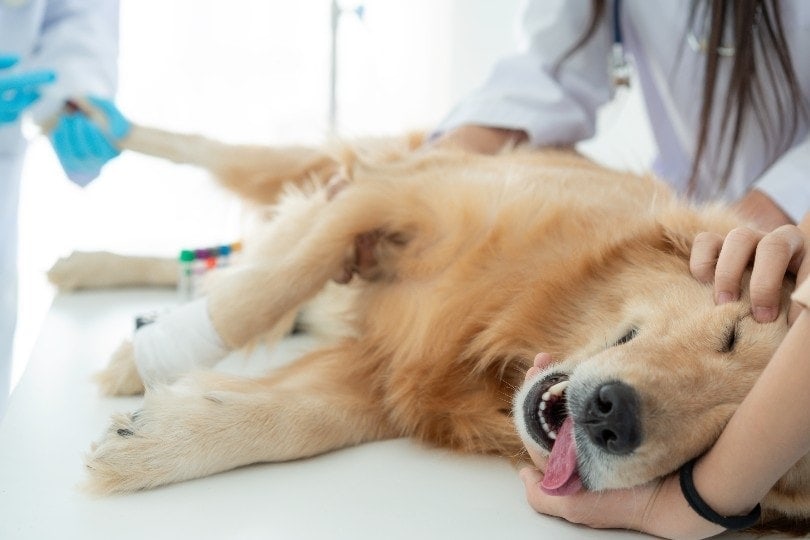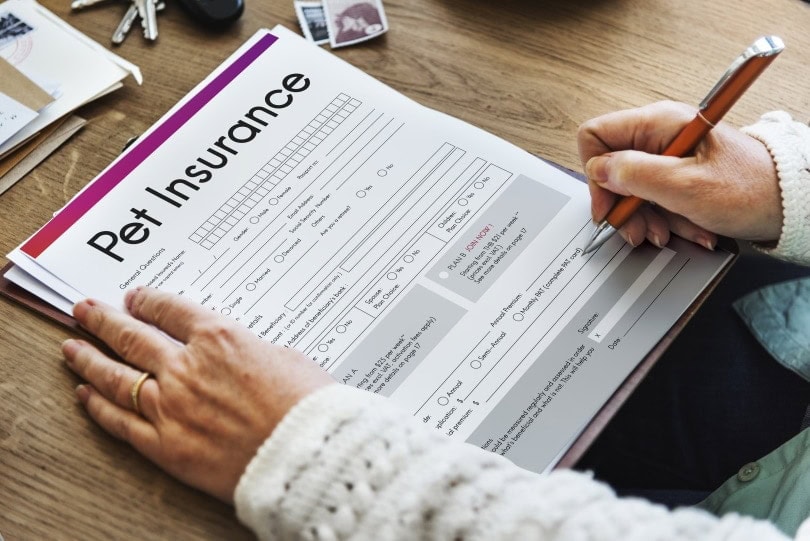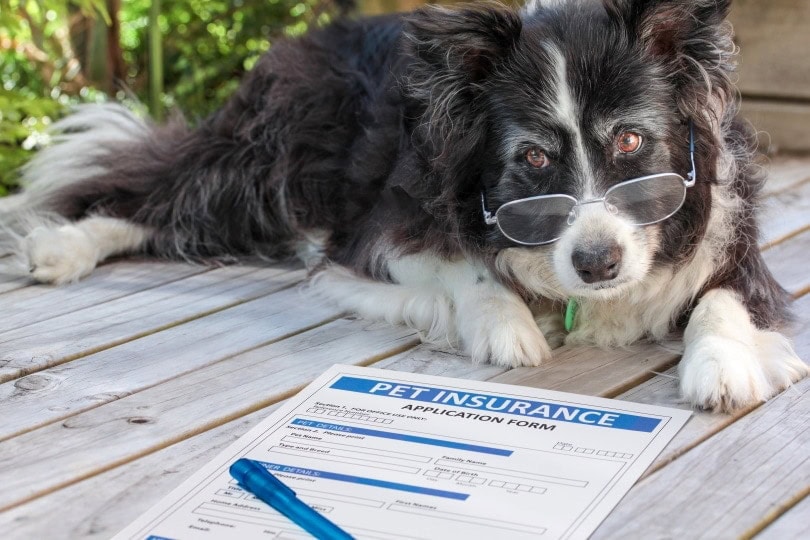How Much Does Pet Insurance Cost in Ohio? (2024 Update)

Updated on
![]()
Click to Skip Ahead
Ohio’s license plates may say “the heart of it all,” but we all know the heart of your home is really your pet. Ohioans can get pet insurance for their furry loved ones to help with the cost of medical care if they become sick or injured. Here’s what you need to know about how much pet insurance costs in Ohio in this year.
The Importance of Pet Insurance
We know that pets can be expensive. One of the most expensive parts of pet ownership is vet care. That’s where pet insurance can help. Pet insurance works just like health insurance for humans. It can help cover some of the cost of vet care if your pet gets sick or injured.
Pet insurance may not be necessary just for routine vet care. But it can be extremely beneficial if your pet has an emergency or requires some type of surgery, which can cost you thousands of dollars. Basically, you pay a monthly price depending on what all you want covered. Your pet insurance company will reimburse you if your pet needs vet care, or some companies will pay the vet’s office directly.
Top Rate Pet Insurance Companies

How Much Does Pet Insurance in Ohio Cost?
There are many factors that affect the cost of pet insurance in Ohio. It depends on the type of coverage you choose, the company you go through, the deductible and plan option you choose, and the type of pet, your pet’s breed, and their age. But on average, pet insurance in Ohio can cost between $20 and $100 a month for dogs, and $10-$50 a month for cats.
The cheapest way to insure your pet is by getting an accident-only policy. These policies typically have premiums of $20-50 per month. If you choose a time-limited or lifetime policy, you can expect to pay $30-$85 per month. If you want to add on all the perks, such as alternative medicine and cancer care, you can expect to pay on the higher end, anywhere from $85 to $129.
Some insurers also offer discounts for bundling pet insurance with other types of insurance, such as home or auto insurance.
While the premium for pet insurance in Ohio is based on a number of factors, the most important factor is always going to be the type of coverage you want for your pet. There are a few main types of pet insurance coverage:
- Accident-only coverage: This type of policy covers your pet if they are injured in an accident, such as being hit by a car. It does not cover sickness or routine care.
- Accident and illness coverage: This type of policy covers accidents that may occur, but it also covers illnesses. The types of illnesses covered vary based on the company and policy you choose. This type of coverage typically costs more than accident-only coverage.
- Time-limited coverage: This type of policy covers your pet for a set period of time, usually 12 months. It will pay out for accidents and illnesses during that time, but once the policy expires, so does the coverage.
- Lifetime coverage: This type of policy covers your pet for their entire life. It will pay out for accidents and illnesses at any time, and as long as you keep up with the premiums, the coverage will never expire.
The type of coverage you choose will have a big impact on the cost of your pet insurance premium. For example, if you choose accident-only coverage, you can expect to pay less than if you choose lifetime coverage.

Other Factors That Affect Pet Insurance Costs in Ohio
There are a number of factors that will affect how much you pay for pet insurance in Ohio. These include:
The Type of Pet
Different types of pets have different needs, and this will be reflected in the cost of their insurance. For example, dogs are larger than cats and so they will usually have higher premiums. Plus, some breeds are more predisposed to certain health and genetic conditions. You may pay more for insurance for these breeds than you would with others.
The Pet’s Age
Younger pets are generally healthier than older pets, so they will usually have lower premiums. It’s better to get coverage from an early age. Senior pets cost more to cover since they are naturally more prone to developing health problems. As your pet ages, you may notice that with some companies, your monthly premium increases as well.
Location
Pets in urban areas typically have higher premiums than those in rural areas, as there are more opportunities for them to get injured or sick. Certain states and rural areas also tend to have lower costs of living, and insurance prices in those areas will reflect the lower costs as well.

Additional Costs to Anticipate
In addition to the monthly premium, there are a few other costs you should be aware of when it comes to pet insurance. These include:
Deductibles
Most pet insurance policies have a deductible, which is the amount you have to pay before the insurance company starts to pay out. The size of the deductible will impact your premium, so it’s important to choose an amount you’re comfortable with.
Coinsurance/Reimbursement
Coinsurance is the percentage of the bill that you are responsible for after the deductible has been paid. For example, if your coinsurance is 20%, and your veterinary bill is $100, you would be responsible for $20, and the insurance company would pay $80. These are also called reimbursements, and you can choose your reimbursement amount when you sign up for your policy. Most companies offer reimbursements around 70-90%.
Exclusions
Most pet insurance policies have exclusions, which are conditions or treatments that are not covered by the policy. Many policies don’t cover pre-existing conditions, which are conditions that affect your pet prior to signing up for insurance coverage. But many policies may exclude certain types of illnesses and accidents as well. It’s important to be aware of these before you purchase a policy so that you’re not caught off guard if your pet needs treatment for something that’s not covered.
Some pet insurance policies also have a limit on how much they will pay out per year or per lifetime. This is something to keep in mind when you’re choosing a policy, as it can impact your decision on how much coverage you need.

How to Get Pet Insurance in Ohio
There are a number of ways to get pet insurance in Ohio. You can purchase a policy directly from an insurance company, or you can get coverage through a pet health insurance plan offered by your employer. You can also add pet insurance to your home insurance policy in some cases.
How Often Should I Shop for Pet Insurance?
It’s a good idea to shop for pet insurance every year or two, as rates can change, and you may be able to find a better deal on coverage. You should also review your policy periodically to make sure it still meets your needs. If your pet has developed a chronic condition, for example, you may need to adjust your coverage to make sure it will continue to be covered.
Just be aware that anything a previous insurance policy was covering may not be covered if you switch companies, because it could be considered a preexisting condition. It’s not a good idea to switch companies or policies if your pet has a long-term illness. But you can always add-on additional coverage to your policy or subtract coverage if your pet no longer needs something covered.
Pet Insurance FAQs
Q: Do I need pet insurance?
A: Whether you need pet insurance is a personal decision. Some people feel that it’s worth the peace of mind, while others don’t feel like it’s necessary. There is no right or wrong answer, so it’s important to decide what’s best for you and your pet.
Q: What does pet insurance cover?
A: Most pet insurance policies cover accidents and illnesses. Some also cover routine care, such as vaccinations and teeth cleanings. The level of coverage will vary depending on the policy, so it’s important to read the fine print before you purchase a policy.

Q: How do I choose the right pet insurance policy?
A: There is no one-size-fits-all answer to this question. The best way to find the right policy for you and your pet is to shop around and compare quotes from different insurers. You should also review your policy periodically to make sure it still meets your needs.
Q: Do I need to get pet insurance when my pet is a puppy or kitten?
A: You don’t need to get pet insurance when your pet is a puppy or kitten, but it’s a good idea to start thinking about it. Puppies and kittens are more likely to have accidents and illnesses than adult dogs and cats, so they may benefit from having insurance. That said, premiums for puppies and kittens are typically higher than for adult pets, so you may want to wait until your pet is a bit older before you purchase a policy. But premiums for senior dogs tend to be the highest, so don’t wait until your dog is of senior age either.
Q: Do I need to get pet insurance if my pet is healthy?
A: Even if your pet is healthy, it’s a good idea to have insurance in case of an accident or illness. You never know when your pet may need medical care, so it’s best to be prepared.

Q: What is a deductible?
A: A deductible is the amount of money you have to pay out-of-pocket before your pet insurance policy kicks in. For example, if your deductible is $500 and your pet needs $1,000 worth of treatment, you will pay the first $500 and your insurer will pay the remaining $500. Deductibles typically range from $100 to $1,000.
Q: Does pet insurance cover pre-existing conditions?
A: Most pet insurance policies do not cover pre-existing conditions. A pre-existing condition is any condition that your pet has before you purchase a policy. If you’re considering purchasing pet insurance, it’s important to get a policy as soon as possible. That way, you can be sure that your pet’s insurance will cover any new conditions that may arise.
Q: How do I file a claim?
A: When you need to file a pet insurance claim, the first thing you’ll need to do is gather all of your pet’s medical records. This includes any receipts, invoices, and lab results. Once you have all of the necessary documentation, you can submit a claim online or by mail. Your insurer will then review your claim and make a decision. If your claim is approved, you will receive reimbursement for your eligible expenses.
Conclusion
Pet insurance is a good idea for any pet owner. It can help you cover the costs of unexpected accidents and illnesses, and it can give you peace of mind knowing that you’re prepared for anything. When choosing a pet insurance policy, it’s important to compare quotes from different insurers and to review your policy periodically to make sure it still meets your needs. And remember, you’re not just paying for health care, you’re paying for peace of mind for a member of your family!
Featured Image Credit: Rawpixel.com, Shutterstock











